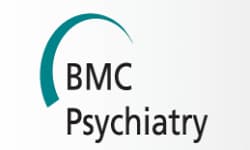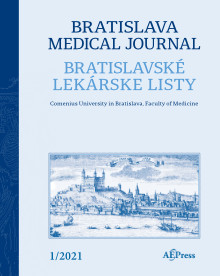 “Epilepsy is a neurological disorder characterized by the presence of seizures and neuropsychiatric comorbidities. Despite the number of antiepileptic drugs, one-third of patients did not have their seizures under control, leading to pharmacoresistance epilepsy.
“Epilepsy is a neurological disorder characterized by the presence of seizures and neuropsychiatric comorbidities. Despite the number of antiepileptic drugs, one-third of patients did not have their seizures under control, leading to pharmacoresistance epilepsy.
Cannabis sativa has been used since ancient times in Medicine for the treatment of many diseases, including convulsive seizures.
In this context, Cannabidiol (CBD), a non-psychoactive phytocannabinoid present in Cannabis, has been a promising compound for treating epilepsies due to its anticonvulsant properties in animal models and humans, especially in pharmacoresistant patients. In this review, we summarize evidence of the CBD anticonvulsant activities present in a great diversity of animal models. Special attention was given to behavioral CBD effects and its translation to human epilepsies.
CBD anticonvulsant effects are associated with a great variety of mechanisms of action such as endocannabinoid and calcium signaling. CBD has shown effectiveness in the clinical scenario for epilepsies, but its effects on epilepsy-related comorbidities are scarce even in basic research. More detailed and complex behavioral evaluation about CBD effects on seizures and epilepsy-related comorbidities are required.”
https://www.ncbi.nlm.nih.gov/pubmed/31954723
“CBD presents anticonvulsant behavioral effects in animal models of epilepsy. CBD induces neuroprotection in animal models of epileptic seizures. Multiple mechanisms of action are associated to CBD anticonvulsant effects. Animal models support CBD therapeutic use for epilepsies treatment.”
https://www.sciencedirect.com/science/article/pii/S014976341931067X?via%3Dihub

 “Osteoarticular equine disease is a common cause of malady; in general, its therapy is supported on steroids and nonsteroidal anti-inflammatories. Nevertheless, many side effects may develop when these drugs are administered. Nowadays, the use of new alternatives for this pathology attention is demanded; in that sense,
“Osteoarticular equine disease is a common cause of malady; in general, its therapy is supported on steroids and nonsteroidal anti-inflammatories. Nevertheless, many side effects may develop when these drugs are administered. Nowadays, the use of new alternatives for this pathology attention is demanded; in that sense,  “Medicinal cannabis has received increased research attention over recent years due to loosening global regulatory changes.
“Medicinal cannabis has received increased research attention over recent years due to loosening global regulatory changes. “Cannabis sativa L. is an ancient medicinal plant wherefrom over 120 cannabinoids are extracted. In the past two decades, there has been increasing interest in the therapeutic potential of cannabis-based treatments for neurological disorders such as epilepsy, and there is now evidence for the medical use of cannabis and its effectiveness for a wide range of diseases.
“Cannabis sativa L. is an ancient medicinal plant wherefrom over 120 cannabinoids are extracted. In the past two decades, there has been increasing interest in the therapeutic potential of cannabis-based treatments for neurological disorders such as epilepsy, and there is now evidence for the medical use of cannabis and its effectiveness for a wide range of diseases. “The aim of this review article is to summarize current knowledge about the role of cannabinoids and cannabinoid receptors in tumor disease modulation and to evaluate comprehensively the use of cannabinoids in cancer patients.
“The aim of this review article is to summarize current knowledge about the role of cannabinoids and cannabinoid receptors in tumor disease modulation and to evaluate comprehensively the use of cannabinoids in cancer patients. “To determine if cannabis may be used as an alternative or adjunct treatment for intermittent and chronic prescription opioid users.
“To determine if cannabis may be used as an alternative or adjunct treatment for intermittent and chronic prescription opioid users. “There is growing recognition of the potential utility of medical cannabis as a harm reduction intervention.
“There is growing recognition of the potential utility of medical cannabis as a harm reduction intervention.
 “Contact hypersensitivity (CHS) is an established animal model for allergic contact dermatitis. Dendritic cells (DCs) play an important role in the sensitization phase of CHS by initiating T cell responses to topically applied haptens. The cannabinoid receptors 1 (CB1) and 2 (CB2) modulate DC functions and inflammatory skin responses, but their influence on the capacity of haptenized DCs to induce CHS is still unknown. We found lower CHS responses to 2,4-dinitro-1-fluorobenzene (DNFB) in wild type (WT) mice after adoptive transfer of haptenized Cnr2-/- and Cnr1-/-/Cnr2-/- bone marrow (BM) DCs as compared to transfer of WT DCs. In contrast, induction of CHS was not affected in WT recipients after transfer of Cnr1-/- DCs. In vitro stimulated Cnr2-/- DCs showed lower CCR7 and CXCR4 expression when compared to WT cells, while in vitro migration towards the chemokine ligands was not affected by CB2. Upregulation of MHC class II and co-stimulatory molecules was also reduced in Cnr2-/- DCs. This study demonstrates that CB2 modulates the maturation phenotype of DCs but not their chemotactic capacities in vitro. These findings and the fact that CHS responses mediated by Cnr2-/- DCs are reduced suggest that CB2 is a promising target for the treatment of inflammatory skin conditions.”
“Contact hypersensitivity (CHS) is an established animal model for allergic contact dermatitis. Dendritic cells (DCs) play an important role in the sensitization phase of CHS by initiating T cell responses to topically applied haptens. The cannabinoid receptors 1 (CB1) and 2 (CB2) modulate DC functions and inflammatory skin responses, but their influence on the capacity of haptenized DCs to induce CHS is still unknown. We found lower CHS responses to 2,4-dinitro-1-fluorobenzene (DNFB) in wild type (WT) mice after adoptive transfer of haptenized Cnr2-/- and Cnr1-/-/Cnr2-/- bone marrow (BM) DCs as compared to transfer of WT DCs. In contrast, induction of CHS was not affected in WT recipients after transfer of Cnr1-/- DCs. In vitro stimulated Cnr2-/- DCs showed lower CCR7 and CXCR4 expression when compared to WT cells, while in vitro migration towards the chemokine ligands was not affected by CB2. Upregulation of MHC class II and co-stimulatory molecules was also reduced in Cnr2-/- DCs. This study demonstrates that CB2 modulates the maturation phenotype of DCs but not their chemotactic capacities in vitro. These findings and the fact that CHS responses mediated by Cnr2-/- DCs are reduced suggest that CB2 is a promising target for the treatment of inflammatory skin conditions.” “Several natural compounds have demonstrated potential for the treatment of central nervous system disorders such as ischemic cerebrovascular disease, glioblastoma, neuropathic pain, neurodegenerative diseases, multiple sclerosis and migraine.
“Several natural compounds have demonstrated potential for the treatment of central nervous system disorders such as ischemic cerebrovascular disease, glioblastoma, neuropathic pain, neurodegenerative diseases, multiple sclerosis and migraine.